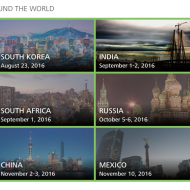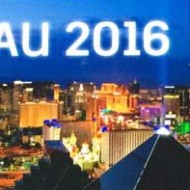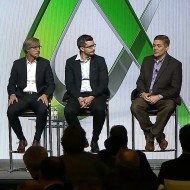Every year, more than 2,000 class proposals are submitted for AU during the Call for Proposals (CFP). And every year, roughly 600 are selected for the event. That leaves about 1,500 quality proposals behind.
For those wondering why their proposal wasn’t chosen, we thought it might be helpful to explain how the decisions are made. Hopefully we can provide a little insight into how we do things and what we’re looking for, and empower you to create a proposal next year that hits the bull’s eye.

What’s hot, what’s not?
After the big event in Las Vegas every year, you might think that the AU team curls up under their desks and naps for a few months, but it’s not true. We only nap for like a day or 2. Then, believe it or not, it’s back to work planning the next year’s event.
There’s a lot of discussion about what went right and what didn’t, and even more discussion about how we can make AU better next time around. A big part of that conversation revolves around topics that were of interest to attendees and experts. Which classes and forums were crowded, and which weren’t? What did people talk about on social media, and what got ignored? We’re always asking how we can better serve the needs of the Autodesk user community.
We also find other ways to gather information on what people are interested in. For example, this year we ran the Tournament of Topics just prior to the opening of CFP so people could vote for their favorite topics. Simulation took home the trophy there, and you’d best believe you’ll be seeing plenty of sessions about simulation at AU 2016.
We also look at AU attendance based on the industries we serve, and plan classes accordingly. The AEC audience at AU is a large 1, for example, so it only makes sense to program enough classes to support that part of our community.
Priorities, priorities
While the AU team is scrubbing its numbers and analyzing trends, other folks at Autodesk are busy, too. We partner with a host of experts here at Autodesk central to get their take on new trends and industry changes. The decisions they’re making about our software help guide many of our strategies and priorities for the year ahead. No question, we’re a strategic bunch.
How can you learn what our priorities are? Good question. The answer is in the CFP Guide. We mix all the priorities together and combine them where appropriate to create a master list of hot topics. Reading the guide can help you hit the mark with your proposal.
Making the hard choices
After the CFP closes, we sort through the proposals based on their alignment with our priorities and start tackling a very challenging review process. Because here’s the thing—the CFP is very competitive. For every proposal that’s accepted, 3 are rejected.
We wish there were room for everyone, but until Las Vegas invents a bigger hotel, this is the way it has to be.
Other factors
While trending topics and industry priorities are the biggest factors in our proposal review process, we also consider the following:
- Are you an Autodesk software user or an Autodesk employee? We want AU to be about the users, so we prioritize users sharing their workflows and methods above Autodesk employees. Sorry, colleagues.
- Are you known in the Autodesk community? Many of our speakers are known in the industry, whether because of work they’ve done, thought leadership, or past presentations at AU. If you’re not well known, doing things like blogging actively and participating in industry groups to raise your profile can help. Want a good place to start? Contribute to the Autodesk Knowledge Network (AKN), contribute to the AU blog (your post would be added right here, where you’re reading right now!), or share your work in the Autodesk Gallery.
- Have you spoken at AU in the past? How’s your speaker credit? Great AU classes often hinge on the kinds of materials our speakers share with the learning community. The teaching materials they provide are often best-in-class and can only be found at AU. Whether we’re talking a sample data set, a step-by-step how-to deck, or a well-written class handout, class materials are critical. So if you’ve spoken at AU before and didn’t meet the standard (by, ahem, forgetting to turn in your materials), be warned: that will be a strike against you when you submit again.
- Does your proposal build on existing ideas or classes? Some how-to and tips-and-tricks classes are evergreen—we’ll need some version of them every year. But AU is where ideas come to grow. So if you’ve noticed a lot of existing classes about a hot topic—3D printing, for example—find a way to build on those classes and present something that takes the idea further. Bring something new and hopefully unique to the table. Submit a class that no one else could teach.
Keep the ideas coming
Rejection hurts, and for all those who submitted a proposal that didn’t get accepted, we wish there were an elixir. But just because we haven’t figured out a way to invite every expert from every corner to the stage in Las Vegas, don’t quit sharing. Your knowledge and expertise are the stuff that drives us. That’s because YOU drive industries—and the future of making things—forward.



